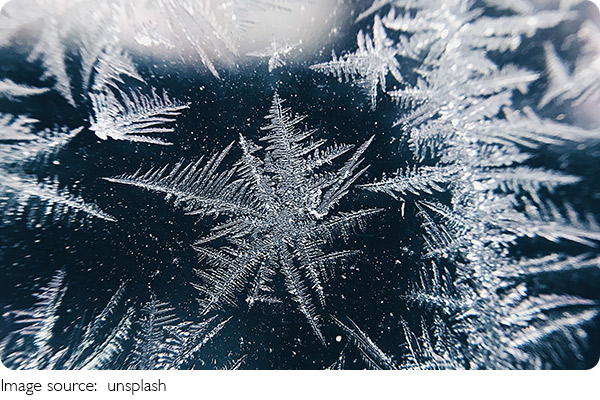Strange Weather Phenomena

Hey Lykkers, have you ever witnessed something truly unusual in the weather? Maybe you've seen a rainbow that appeared in the dead of winter or experienced an unexpectedly warm day in the middle of summer.
These strange weather phenomena can be fascinating, and they often leave us wondering: What causes these oddities? From bizarre rainfall patterns to unusual temperature swings, strange weather events are more common than we might think.
Let's dive into some of the most interesting weather phenomena from around the world and explore the science behind them.
Heat Bursts: Exploding Temperatures
Have you ever felt the temperature suddenly rise by several degrees in a matter of minutes? That's a heat burst in action. Heat bursts are sudden, intense increases in temperature, typically occurring in the late afternoon or evening. They can happen when air that is cooler and denser than the surrounding atmosphere descends rapidly from higher altitudes. The result is a dramatic increase in temperature and a drop in humidity.
These bursts are often short-lived but can cause significant discomfort and are sometimes mistaken for the effects of climate change. Interestingly, heat bursts are most common in areas with dry climates, dry air meets cooler conditions.

Ball Lightning: A Shocking Phenomenon
Ball lightning is one of the most mysterious weather phenomena known to science. This rare occurrence happens when a floating, glowing sphere of electricity appears during thunderstorms. The phenomenon usually lasts for only a few seconds and is often described as moving erratically. Scientists still aren't entirely sure why ball lightning forms, but one theory suggests that it might occur when lightning strikes certain materials, causing them to ionize and release energy in the form of glowing spheres.
Ball lightning can be dangerous because of the electrical charges it carries, though it typically disappears quickly before causing any harm. Witnesses often report seeing ball lightning inside buildings, near windows, or even in enclosed spaces, making it one of the most eerie and unexplained weather phenomena.
Red Rain: When Rain Turns Crimson
Imagine walking outside, only to have rain start falling in shades of red or orange. This might sound like a scene from a sci-fi movie, but it's an actual weather phenomenon known as "red rain." Red rain occurs when fine particles of sand or dust, often from desert storms, are carried into the atmosphere and mix with rain clouds. The particles can come from faraway places and when they fall with rain, they tint the water red.
In some cases, red rain has been linked to volcanic eruptions, which can release ash into the air that ends up mixing with rain clouds. While red rain is rare, it has been observed in many parts of the world.

Ice Storms: Nature's Frozen Fury
We all know what snow is, but what about ice storms? An ice storm is a weather event in which freezing rain falls, coating everything it touches in a layer of ice. This can lead to dangerous conditions, including downed power lines, fallen trees, and icy roads. Ice storms are particularly treacherous because they often occur in areas where the ground temperature is below freezing, while the air above remains above freezing. This causes rain to freeze upon contact with the ground.
Ice storms can last for hours, causing widespread damage and power outages. In some cases, the ice buildup can be so thick that it can break tree branches and even damage buildings. These storms are most common in the winter months.
Mirages: The Illusion of Water
Have you ever thought you saw water or a lake on the horizon, only to find out it wasn't there at all? This optical illusion, known as a mirage, happens when light is refracted due to temperature differences between the ground and the air above it. In desert regions or hot roads, this can create the illusion of water, which is often mistaken for a real body of water.
Mirages are caused by the bending of light rays as they pass through air layers with different temperatures. This phenomenon can also cause other illusions, such as the appearance of distant objects seeming to float in mid-air. Although mirages are not harmful, they can confuse travelers and make them think they've found an oasis or a water source when in fact it's just an illusion.
The Science Behind These Weather Phenomena
All of these strange weather phenomena have one thing in common: they are the result of natural processes. From atmospheric pressure and temperature changes to the behavior of light and particles in the air, each phenomenon is an intriguing display of nature's complexity. Scientists study these occurrences to better understand our environment and how different elements interact to create such unusual events.
While some of these weather events are rare and hard to predict, others happen more frequently than we realize. Understanding the science behind them can help us prepare for unusual weather and better appreciate the beauty and mystery of our planet.
Conclusion: The Wonder of Weather
Lykkers, strange weather phenomena are reminders of how fascinating and unpredictable the natural world can be. From heat bursts and ball lightning to red rain and ice storms, these events showcase the dynamic forces at work in our atmosphere. While we may not always fully understand why these phenomena occur, one thing is certain: they are a reminder of how much we still have to learn about the world around us.
The next time you see a rainbow in winter or hear about a strange weather event, take a moment to wonder about the science behind it. Who knows? You might just witness a weather phenomenon that adds to the list of nature's most mysterious and awe-inspiring events.
-
 Daily Workout MomentsHe Became My Workout Buddy?! Here’s How Our Exercise Days Turned Into My Favorite Memories!
Daily Workout MomentsHe Became My Workout Buddy?! Here’s How Our Exercise Days Turned Into My Favorite Memories! -
 Get Comfortable with GlassesNew to Glasses? Here’s How to Adjust Quickly Without the Headaches!
Get Comfortable with GlassesNew to Glasses? Here’s How to Adjust Quickly Without the Headaches! -
 Unseen Eating HabitStruggling with Midnight Munchies? This Is What Sleep-Eating Does to Your Body!
Unseen Eating HabitStruggling with Midnight Munchies? This Is What Sleep-Eating Does to Your Body!